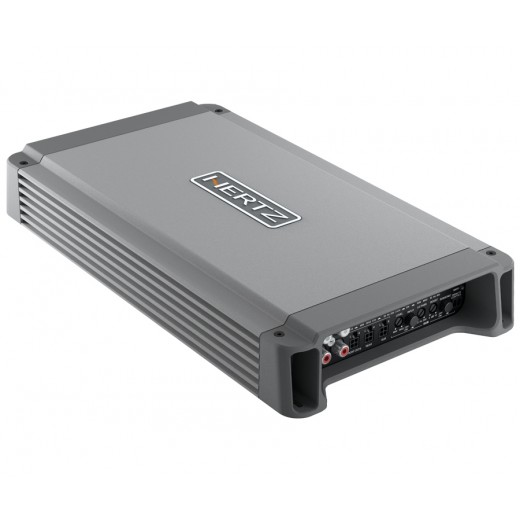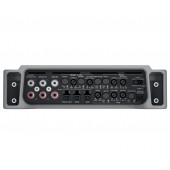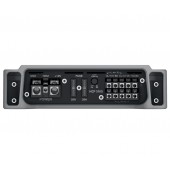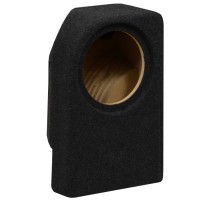Hertz HCP 5 MD 24V boat amplifier
5-channel amplifier, 4 x 65 + 1 x 200 / 2 x 210 + 1 x 200 W RMS (4 Ω) / 4 x 105 + 1 x 330 W RMS (2 Ω), class D, suitable for installation on boats
More about the product
More about the product
Hertz HCP 5 MD 24V boat amplifier
The HCP 5 MD 24V marine amplifier features a compact design ready to face the open water environment and provides plenty of clean power. The HCP M cooler was made of extruded aluminum, a material that has no competition for lightness, robustness and heat dissipation. To keep the size to a minimum, the power transistors are placed between the circuit board and the top of the heatsink, where the heat collects. The accumulated heat is then channeled into special dissipation "wings" on the side of the amplifier. Both the Pre-In and Speaker-In inputs have special balanced circuitry that ensures high immunity to electromagnetic interference for noise-free results. The dividing section of the HCP M amplifiers ensures extreme flexibility: fully adjustable Lo-pass, Hi-pass filters with 12 dB/Oct. and 24 dB/Oct slopes according to amplifier model; Bass Boost is also available to enhance low frequencies. More precisely, the HCP 5 MD 24V offers Hi-Pass pre-amplified outputs that allow you to create a band pass on the front woofer.| Catalog number | HCP 5 MD 24V |
| Brand | Hertz |
| Links | Official web presentation |
| Number of amplifier channelsAmplifiers are divided into: - Monoblocks - 2-channel - 3-channel - 4-channel - 5-channel - 6-channel - multi-channel Each channel is used to power one speaker for the coaxial type, or one side if they are component speakers. Monoblock type amplifiers are mainly used for subwoofers. 2-channel are suitable for both subwoofers and, for example, the front pair of speakers in a car. 3-channel is used for front or rear speakers + subwoofer. 4-channel are used for front + rear speakers or 1 pair of speakers + subwoofer. 6 or 5-channel are used for 2 pairs of speakers + subwoofer, most often. Bridging means connecting the amplifier to a bridge, using the + pole from one channel and the - pole from the other channel. In most cases this is shown as "BRIDGED" on the amplifier. | 5 |
| Energy class of the amplifierAmplifiers are divided into two basic classes: analog and digital . Analog amplifiers (A/B) have higher consumption requirements, but usually have a more natural sound. Digital amplifiers (D) have significantly lower consumption and higher efficiency, but the sound may not be as faithful as with classic analog amplifiers. | D |
| RMS power into 4 ΩRMS power when loading speakers or subwoofer at 4 Ω. RMS power is the constant power of the amplifier and is one of the most important parameters when choosing an amplifier. | 4 x 65 + 1 x 200 / 2 x 210 + 1 x 200 W |
| RMS power into 2 ΩRMS power when loading speakers or subwoofer at 2 Ω. RMS power is the constant power of the amplifier and is one of the most important parameters when choosing an amplifier. | 4 x 105 + 1 x 330 W |
| Harmonic Distortion (THD)Total harmonic distortion indicates how much the input signal is distorted in the amplifier. Distortions appear as overtones contained in the output signal. The proportion of originally absent parts of the signal is given as a percentage, typical values are between 0.001% and 0.5%. Distortion is measured in their power band. If it exceeds the limit of 0.7% from a certain power, it is the value of the output power of the given amplifier, from which it no longer plays without distortion and from which the distortion usually increases steeply, so that no further increase in power can be counted on. The lower the value, the better. | 0.02% |
| Signal-to-noise ratioThe signal-to-noise ratio means that the output signal always contains noise. The signal-to-noise ratio expresses how much of this noise is compared to the useful signal. The so-called A value is given, which does not take deep and very high frequencies into account. This corresponds to the characteristic of human hearing, which is not so sensitive to deep frequencies, especially below 1 kHz. The higher the value, the better the amplifier is. | 100dB |
| Bass boostBass boost or bass enhancement. With this function, the bass itself can be emphasized, at a high level of bass boost, the speakers and the subwoofer can distort a lot and the sound will be worse than better. We therefore recommend using the "bass boost" function wisely. With maximum use of bass boost, there is a risk of damage to the speakers and thus to the subwoofer. | 0 - 12 dB |
| SubsonicA subsonic filter is essentially a high-pass filter for very low frequencies, typically 45 Hz or lower. Anything below this setting is weakened. The point is that the subwoofer does not go below the subsonic filter setting and does not overload itself with very low frequencies. A useful function, if set correctly, the subwoofer is not overloaded. | 25 Hz @ 24 dB/Oct. |
| Damping factorDF - Damping Factor . It is the ratio of the load (repro + cables, crossover, etc.) to the internal resistance of the amplifier. The bigger the DF, the more controlled the bass. Amplifiers with a lower DF tend to hum. Subwoofers with a higher Q in the bass reflex and sometimes in the enclosure will also cause humming. | 100 |
| The value of the fuses on the amplifierFrom the value of the fuses on the amplifier, you can get a true picture of the real performance of the amplifier. | 2 x 25A |
| Dimensions of the amplifier | 345 x 190 x 50 mm |
| Mass | 2.61 kg |
| Other | Corrosion, UV, salt spray and splash proof (IP64) |
Product comments
Evaluation
ask us



